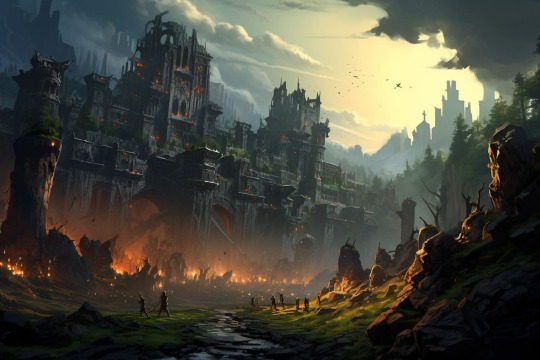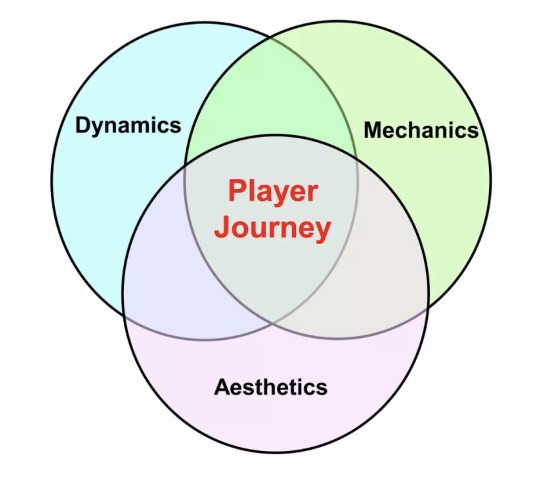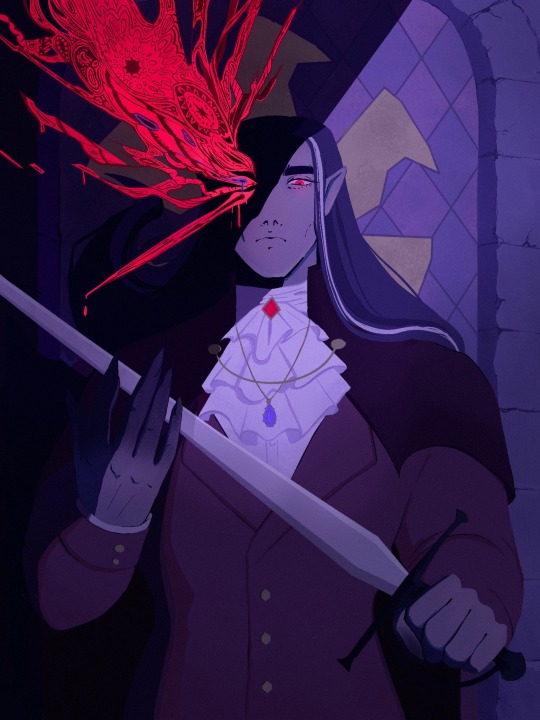#Player Engagement
Text
Product design and psychology: The Role of Grinding in Video Game Design
Keywords: Grinding, Video Gaming, Game Design, Player Engagement, Psychological Manipulation

Abstract:
This paper scrutinizes the utilization of "grinding" as a technique in video game design, particularly as a method of psychological manipulation that affects player engagement and behaviour. Case studies are explored to deliver a comprehensive understanding of the practical application of grinding and its implications, all from a product design viewpoint.
Introduction:
The design principles governing video games frequently incorporate mechanisms intended to stimulate player engagement and prolong interaction time. One such prevalent mechanism is "grinding," defined as the practice of executing repetitive tasks within the game environment to achieve specific objectives. While grinding can evoke a sense of achievement, it also carries the potential to induce exhaustion and frustration among players. This study endeavours to explore the intricacies of grinding, its role in game design, and its influence on player experience.
Explanation:
Coined from the concept of persistently "grinding away" at a task, the term "grinding" in the gaming context implies the undertaking of repetitive actions by a player to attain certain results or to advance within the game. In numerous instances, such actions may not directly correlate with the game's primary storyline or objectives but are aimed at accumulating experience points, in-game currency, or specialized items.
Grinding is an omnipresent component across a vast array of game genres, with its prominence notably manifested in Massively Multiplayer Online Role-Playing Games (MMORPGs). In these games, the player's progression and performance are often gauged based on their character's level, skills, and available equipment.
From the standpoint of game design, grinding assumes several roles. It serves to extend the game's lifespan by instituting goals that necessitate substantial time investment. Additionally, it fosters a sense of accomplishment and progression and can encourage social interaction in multiplayer environments. Despite these advantages, critics contend that grinding can lead to monotonous and ungratifying gameplay experiences. The considerable time commitment required by grinding may propel some players towards purchasing in-game enhancements using real-world money, thereby generating additional revenue for game developers.
Further, there is an ongoing discourse concerning the psychological implications of grinding. Its repetitive and rewarding nature might precipitate addictive behaviours and excessive consumption of time, mirroring the effects typically associated with gambling disorders. Through the exploration of these aspects, we aim to shed light on the complex dynamics of grinding in the context of modern video gaming.
Grinding in Gaming: Conceptualization and Design
Grinding typically refers to the act of performing repetitive actions in a game to attain a specific goal, often associated with levelling up, obtaining items, or advancing in-game skills. Although it can give players a sense of progression, it can also serve as a roadblock, encouraging players to consider alternative paths to progress, such as microtransactions.
Case Study: World of Warcraft
Blizzard Entertainment's World of Warcraft (WoW) extensively employs grinding. Players often engage in repetitive tasks like fighting the same enemies, repeatedly battling against non-player characters (NPCs), or completing the same quests to increase their character's level, to gain experience points, in-game currency, or rare items. This grind contributes to a sense of achievement but has also been criticized for sometimes leading to a tedious gameplay experience.
youtube
Case Study: Candy Crush Saga
King's Candy Crush Saga uses grinding as a monetization strategy. As players progress and levels become harder, the option to grind through the game becomes more attractive. Alternatively, players can buy power-ups and boosters to surpass the grind, effectively translating grinding mechanics into revenue for the game developers.
Case Study: Destiny 2
This game provides an example of a 'loot grind.' Players repeatedly complete activities like strikes, raids, or public events to earn 'engrams' – randomized gear drops. The goal is often to collect more powerful gear to increase a character's power level.
youtube
Case Study: Old School RuneScape
In this MMORPG, players might grind by repetitively performing tasks like mining, fishing, or woodcutting. These actions, though monotonous, boost the player's skill levels, enabling them to perform new tasks, quests, or create new items.
Implications for Game Design
Grinding, while a tool to extend game playtime and potentially drive monetization, must be thoughtfully implemented to avoid player fatigue or burnout. Game designers should strike a balance between meaningful progression and repetitive grind, ensuring the game remains engaging and satisfying.
Conclusion
Grinding, as a mechanism of psychological manipulation in video game design, can greatly impact player behaviour and engagement. Striking a balance between challenge, satisfaction, and repetition is vital to ensure a rewarding gameplay experience. As the video game industry advances, it will be intriguing to observe the evolution and refinement of grinding mechanisms and their psychological impact on players.
References:
Sicart, M. (2013). Grinding in Games: Understanding the Appeal. Philosophy of Computer Games Conference, 8-11.
Hamari, J., Alha, K., Järvelä, S., Kivikangas, J. M., Koivisto, J., & Paavilainen, J. (2017). Why do players buy in-game content? An empirical study on concrete purchase motivations. Computers in Human Behavior, 68, 538-546. doi:10.1016/j.chb.2016.11.045
Blizzard Entertainment. (2004). World of Warcraft [Video Game]. Blizzard Entertainment.
King. (2012). Candy Crush Saga [Video Game]. King.
Bungie. (2017). Destiny 2 [Video Game]. Activision.
Jagex. (2013). Old School RuneScape [Video Game]. Jagex.
Yee, N. (2006). Motivations of play in online games. CyberPsychology & Behavior, 9(6), 772-775. doi:10.1089/cpb.2006.9.772
Johnson, M. R., & Woodcock, J. (2019). The impacts of live streaming and Twitch.tv on the video game industry. Media, Culture & Society, 41(5), 670-688. doi:10.1177/0163443718818363
King, D., Delfabbro, P., & Griffiths, M. (2010). Video game structural characteristics: A new psychological taxonomy. International Journal of Mental Health and Addiction, 8(1), 90-106. doi:10.1007/s11469-009-9206-4
Deterding, S., Dixon, D., Khaled, R., & Nacke, L. (2011). From game design elements to gamefulness: defining "gamification". MindTrek '11: Proceedings of the 15th International Academic MindTrek Conference: Envisioning Future Media Environments, 9-15. doi:10.1145/2181037.2181040
#Grinding#Video Gaming#Game Design#Player Engagement#Psychological Manipulation#product design#gaming#user experience#player behaviour#destiny 2#world of warcraft#runescape#old school runescape#candy crush#Youtube
70 notes
·
View notes
Photo

Redfall Game Success on Xbox Game Pass: Overcoming Hurdles
Introduction: Redfall’s Rocky Start and Xbox’s Apology
Redfall, the highly anticipated first-party title developed by Arkane Austin under Microsoft, faced a tumultuous beginning when it was launched on May 1, 2023. The game encountered technical issues and design choices that failed to resonate with players, resulting in a wave of criticism that couldn’t be ignored. Even Phil Spencer, the head of Xbox, felt compelled to apologize, acknowledging the game’s “quality issues” that required immediate attention.
Redfall’s Potential: A Glimmer of Hope on Xbox Game Pass
Despite the initial backlash, there is a glimmer of hope for Redfall as it gains traction through its inclusion in Xbox Game Pass, the popular subscription service. Matt Booty, the chief of Xbox Game Studios, has shared that the game is receiving positive engagement on the platform. Booty expressed accountability for the shortcomings of Arkane and Microsoft, recognizing the challenges they faced during the development process. He also admitted that the expectations for the game’s quality as a first-party release might not have been effectively managed.
Commitment to Improvement: Rectifying Redfall’s Issues
While the journey has been challenging for both Microsoft and Arkane Austin, Booty emphasized the studio’s commitment to rectifying the issues plaguing Redfall. He questioned the extent of the miss and expressed his desire to support the team in delivering the game they originally envisioned. With the development team working tirelessly on updates and continued content for Redfall, there is optimism that the game will eventually reach its full potential.
Microsoft’s Showcase: Regaining Momentum
To regain momentum and showcase its dedication to quality first-party titles, Microsoft recently held an impressive Xbox Game Showcase. The event offered glimpses of highly anticipated games such as Fable, South of Midnight, Avowed, Forza Motorsport, and Starfield. Both Forza and Starfield remain on track for release later this year, and Microsoft hopes their success will mark the beginning of a renaissance for its first-party offerings.
Winning Over Players: Redfall’s Gradual Turnaround
Despite the initial hurdles faced by Redfall, the game is gradually winning over players. The ongoing support and updates from the development team have played a significant role in this turnaround. The positive engagement on Xbox Game Pass highlights the platform’s ability to provide developers with a second chance to improve their games post-launch and capture the hearts of players.
Conclusion: Redfall’s Journey and Potential Success
In conclusion, Redfall’s journey has been a rollercoaster ride, starting with a rocky launch and then ongoing efforts to address the game’s issues. Microsoft’s commitment to supporting Arkane Austin and the game’s presence on Xbox Game Pass are crucial elements in its potential success. As players continue to explore the game’s offerings and developers work diligently to enhance the overall experience, there is hope that Redfall will rise above its initial setbacks and become a shining example of a game that overcame adversity to win the hearts of gamers worldwide.
Posted using PostyBirb
#apology#Arkane Austin#Avowed#design choices#development team#expectations#Fable#first-party title#Forza Motorsport#gaming#Microsoft#Phil Spencer#player engagement#player satisfaction#post-launch improvements#Redfall#South of Midnight#Starfield#subscription service#technical issues#updates#Video Game#Xbox Game Pass#Xbox Game Showcase#Xbox Game Studios.#Redfall game success Xbox Game Pass
3 notes
·
View notes
Text
The Battle Royale Trope in Video Games: A Phenomenon of Competition and Survival

In recent years, the video game industry has witnessed a significant surge in the popularity of the Battle Royale trope. This genre has evolved from its humble beginnings into a gaming phenomenon that captivates millions of players worldwide. The Battle Royale trope revolves around intense multiplayer competitions where a large number of players fight until only one remains standing. This essay explores the rise and appeal of the Battle Royale trope, its key elements, and its impact on the gaming landscape.
The Rise of Battle Royale:
The Battle Royale trope traces its roots to the 2000 Japanese film "Battle Royale" and the 1999 novel of the same name by Koushun Takami. However, it wasn't until games like "PlayerUnknown's Battlegrounds" (PUBG) and "Fortnite" emerged that the genre gained widespread recognition. PUBG's realistic approach and Fortnite's colorful, accessible style attracted diverse audiences, contributing to the trope's popularity.

Key Elements of Battle Royale:
Last Man Standing: The central premise of Battle Royale games is clear-cut: players must eliminate opponents until they are the sole survivor. This high-stakes competition creates intense, heart-pounding moments.
Loot and Scavenging: Players must scavenge for weapons, equipment, and resources, promoting strategic decision-making and adaptability.
Map Contraction: To keep matches engaging, Battle Royale games employ a shrinking play area that forces players into confrontations. This mechanic ensures that matches reach thrilling climaxes.
Multiplayer Gameplay: With dozens or even hundreds of players in a single match, Battle Royale games offer dynamic, unpredictable experiences, fostering both cooperation and competition.
The Appeal of Battle Royale:
Several factors contribute to the enduring appeal of the Battle Royale trope:
Competitive Spirit: Battle Royale games tap into players' competitive instincts, providing a platform to test their skills against others.
Accessibility: Many Battle Royale games are free-to-play and available on multiple platforms, making them accessible to a wide audience.
Emergent Stories: The unpredictable nature of Battle Royale matches leads to emergent narratives, creating memorable moments and stories that players can share.
Continuous Updates: Developers often release frequent updates, introducing new content, challenges, and seasonal themes, keeping the games fresh and engaging.

Impact on the Gaming Landscape:
The Battle Royale trope has left an indelible mark on the gaming industry. It has influenced game design, player expectations, and even popular culture. Esports tournaments featuring Battle Royale titles have gained immense popularity, showcasing the competitive nature of the genre. Additionally, the genre's success has prompted existing franchises and developers to incorporate Battle Royale modes into their games, further solidifying its impact.
In conclusion, the Battle Royale trope has evolved from a niche concept to a dominant force in the gaming world. Its emphasis on competition, survival, and unpredictability resonates with players across the globe. As the genre continues to evolve, it remains an exciting and influential aspect of contemporary gaming culture.

#Battle Royale#video games#competition#survival#gaming phenomenon#multiplayer#esports#game design#accessibility#emergent narratives#player engagement
0 notes
Text
The Art of Game Balance and Narrative Design: Crafting the Ideal Player Experience
Short post today:, Folx, hope everyone is well.
Update:
Grad school is wild. NSF GRF is coming along smoothly. Hunkering down towards that’s October deadline.
I might be allergic to garlic? News to me, as a garlickoholic. But I’ll live?
Baldur’s Gate 3 is AS dynamic and rowdy and intoxicatingly delicious as the tabloids and reporters claim. content
Now, onto the Main Content: balancing the…

View On WordPress
#Autonomy Support#Difficulty Curve#Emotional Impact#Flow State#Game Balance#game design#game development#Game Mechanics#Game Theory#Immersive Storytelling#Intrinsic Motivation#narrative design#Narrative Integration.#Player Agency#Player Engagement#Self-Determination Theory#Skill Balancing#storytelling
0 notes
Text
Cultivating Player Engagement in Dungeons & Dragons: Unleashing the Magic of Immersive Gameplay
In the captivating realm of Dungeons & Dragons (D&D), the Dungeon Master (DM) wields a storyteller’s wand, crafting narratives that come alive through the choices of players. At the core of this enchanting experience lies player engagement – the secret ingredient that transforms a mere gaming session into an unforgettable adventure. In this blog post, we delve into the art of cultivating player…
View On WordPress
#d and d#D&D#dnd#dungeons & dragons#Dungeons and Dragons#player engagement#role playing#tabletop game
0 notes
Text
Game Length: Does Size Really Matter?
Just penned down my latest blog post about game design, and it's got me thinking... Does game length really matter? 🤔🎮 the Power of an Epic Odyssey or the Beauty of a Brief Symphony! #GameDesign #GameDev #IndieDev #AdobeFirefly
How long should a game be? Does size really matter when it comes to delivering a satisfying gaming experience? These are questions that have sparked countless debates among players and industry professionals alike. Today, we’ll dive into this topic and explore my approach to game length, which may challenge conventional wisdom.
Traditionally, many gamers have associated longer games with better…

View On WordPress
#creative vision#game design#game length#game value#immersive gameplay#memorable experiences#narrative depth#player engagement#quality over quantity#replayability
0 notes
Text
How to Award and Track Inspiration the Easy Way
Learn the easiest way to award and track inspiration points with this practical technique. Use Inspiration cards, engage your players, and see their rolls soar! Check out the article for all the details. #dnd
I have personally tried a few different methods of using Inspiration at the table. Out of all of them, this technique is the easiest way to award and track inspiration during your D&D sessions.
https://www.cryptocartographer.net/blog/inspiration-cards
This post from Crypto Cartographer has a great set of Inspiration cards that you can print up and hand out to your players when you award them an…
View On WordPress
#dnd#dnd5e#dungeon master#dungeons and dragons#game master#gametips#inspiration#inspiration point#player engagement#roleplaying#rpg#tabletop games#ttrpg
0 notes
Text
Batman "I don't like working with others, I don't trust them, and I won't sacrifice Gotham to help out unless it's absolutely dire."
*Has an extensive network of vigilantes in Gotham and elsewhere, is on 85 different Justice League Rosters, would die for half of them*
Friendly Neighborhood Spider-Man *fighting every hero he ever meets*
"Weird that no-one likes me, don't know what their fucking problem is, I should fight them"
#batman#spider-man#i always think its so fucking funny when every justice league adaption goes 'he isnt a team player' like#he's been in so many different variations of the justice league its not even funny#autumn could start late and this man would have a team assembled#meanwhile mr friendly neighborhood over here has probably engaged in fisticuffs with every marvel character in existence#because they rightfully looked at him funny#one of my favorite panels in his avengers run is him throwing wolverine out of an UnBreakable window because he called mj dimwitted#also that superman/spider-man crossover where peter broke his hands trying to punch him into submission#i was gonna say this man would punch his own reflection if it looked at him funny but considering the clone saga exists#he basically has
871 notes
·
View notes
Text

“I made a pact with Vol, a pact of Blood”
Strahd von Zarovich and his very, very good friend.
#NONE OF THE OTHER PLAYER FOLLOWER ME HERE SO ITS FREE GAME TO POST HERE BAYBEE!#I get dm spoilers sometimes because that’s what happens when ur engaged to the dam#no but last sesh our dm told us vampyr/vol doesn’t matter like at all in base campaign and that feels so weird to me because it influences#our every move in our campaign it’s awesome#we’ll have to kill it too after killing Strahd and that’s fucked up#I hate it!!!#dnd#dnd art#strahd von zarovich#dnd Strahd#spoilers#cos#curse of Strahd#curse of strahd spoilers#cos spoilers#d&d#d&d art#art#fan art#my art#strahd#I love him!#vol#vampyr#fuck that guy tho all my homies hate him!#digital art#also this style of art is like way different than what I normally do but it was fun!
444 notes
·
View notes
Text
i love it when bad is very specifically a good roleplayer by giving other people good prompts. like casually bringing up wilbur now to tallulah. or when he put missa in the petting zoo. or all those times he Tormented the Lesbians so they could protect each other from him. its just so !!!! I love watching roleplayers be considerate of other roleplayers and gleefully hand over something they Know the other person's character can react to. i've seen cellbit do it, too (that time he handed his knife to bbh. oh my god). it's not a rare thing, and it's possible to be a good roleplayer without keeping that sort of considerate back and forth in mind, but its one of my favourite things to notice. foolish does it too, sometimes- i haven't watched him much, but i did take note of when he Made Sure to bring jaiden along with him on a cucurucho quest. and basically every interaction he had with bad when the eggs were missing. its just so so good
#i think one of the worst things that can happen to a roleplay is for the players to stop interacting with each others' storylines#roleplay is an incredible medium particularly because of that Collaboration and Improv#and if youre just standing around pushing your own story then yeah sure its fun#but its MAGICAL when people engage with it#and its MAGICAL to look at a story#go 'what if i. did something funny here'#and throw in a little wrench that lights a delighted FIRE in the other player's eyes because now they get to go on a rant#or take drastic measures#or just do something a little fun that they couldn't/wouldn't have without that prompting#its like when bad went around telling people he was imposing building laws on behalf of the feds and people were like#actively a little disappointed that it was just a prank and they couldn't go HAM#anyway i miss roleplay.#qsmp why would you make all these people live so far apart from each other </3 spawn is so uninhabitable there is nothing for them#to make pretty or modify its not Theirs there's no reason for them to be there other than to shop#but i am on . a tangent.#and that is its own lighthearted post analyzing the psychology of built and modifiable vs provided and immovable spaces in the game#no its not late at night and i should not be doing other things (lying)
220 notes
·
View notes
Text
Product design and psychology: Exploring Gacha Mechanics in Video Game Design
Keywords: Gacha Mechanics, Gaming Industry, Psycho-Manipulation, Player Behavior, Case Studies

Abstract:
This research paper delves into the intricate relationship between game design and psychology, with a concentrated focus on 'Gacha' mechanics prevalent in the gaming sector. Originating from Japanese toy vending machines, the Gacha system has grown to be a powerful tool in shaping player behaviour. The paper illuminates the conceptual framework underlying Gacha mechanics, emphasizing its capabilities in manipulating player actions and decisions. Through an exhaustive examination, this study presents a detailed understanding of its psycho-manipulative attributes and supports its findings with specific case studies from the gaming industry. The work serves as a comprehensive exploration of the influence and ramifications of Gacha mechanics in contemporary game design.
Introduction:
The Gacha system, inspired by Japanese toy vending machines, stands as a hallmark strategy in the contemporary gaming industry. Fundamental to its design is the 'loot box' principle, where players invest financially with hopes of securing a randomized item, the allure of which varies in rarity. Beyond mere chance-based rewards, this mechanic intriguingly intersects with deep-rooted psychological tendencies, captivating human desires for unpredictable outcomes and rewards. Such mechanics are not mere playful inclusions; they strategically bolster player retention and significantly influence revenue streams. As the following sections will expound upon, the Gacha system is much more than a gaming novelty; it carries potent psycho-manipulative attributes. Through a detailed exploration, this paper seeks to unravel the underlying psychological tenets that grant Gacha mechanics their notable efficacy, further enriching the discourse with industry-specific case studies that spotlight its transformative impact.
Theoretical Foundation of Gacha Mechanics:
Gacha mechanics, now pervasive in the gaming industry, find their roots in the foundational theories of behavioral psychology, particularly the principles outlined by B.F. Skinner concerning operant conditioning. Delving deeper into the theoretical underpinnings of Gacha mechanics, we encounter an alignment with Skinner's variable-ratio schedule—a schedule of reinforcement wherein responses are reinforced after an unpredictable number of responses. This unpredictable nature of reinforcement, as Skinner posited, leads to high rates of response, which persists even in the sporadic or even absent delivery of rewards.
Such a system bears stark resemblance to the operations of Gacha mechanics in games. For instance, in "Fire Emblem Heroes," players use virtual currency—either organically accrued within the game or procured through real-world monetary transactions—to obtain randomized characters. The exhilaration associated with acquiring a rare and formidable character, with its inherent unpredictability, mirrors the principles of gambling, a pursuit universally acknowledged for its addictive qualities. Drawing a parallel, "Genshin Impact" deploys a similar methodology, allowing players to utilize Primogems, the in-game currency, to secure weapons or characters, each acquisition bearing its own element of unpredictability and potential reward.
In essence, these game designs intricately weave the principles of operant conditioning into their fabric, utilizing the powerful allure of unpredictable rewards to foster player engagement. Such mechanisms, grounded in well-established psychological theories, underscore the reason for the profound addictiveness and wide-reaching success of Gacha-based games in contemporary gaming culture.
The Psychological Framework of Gacha Mechanics:
Gacha mechanics can be analysed through the lens of operant conditioning, specifically Skinner's variable-ratio reinforcement schedule. This schedule, characterized by delivering rewards after an unpredictable number of responses, results in a high response rate and resistance to extinction. This parallels the randomized reward mechanism in Gacha systems, which fosters a sense of persistent anticipation and engagement in players.
The Psycho-Manipulative Dimension:
The realm of Gacha mechanics, deeply entrenched in the gaming industry, employs an array of psychologically manipulative strategies designed to maintain player engagement and promote continued monetary investments. Central to this design are mechanisms such as the 'near-miss effect and the 'sunk cost' fallacy, which, when operationalized, tap into core human cognitive tendencies.
The 'near-miss effect is particularly intriguing. It is inextricably tied to the psychological construct of cognitive dissonance, a state wherein players, upon achieving an outcome tantalizingly close to the desired result, experience a tension between expectation and reality. This tension acts as a catalyst, driving players towards further attempts in the game with the hope of reconciling their near victories with an eventual success. The result is an increased commitment, both in terms of time and financial resources.
Complementing this is the 'sunk cost fallacy.' Here, players, having already invested significant amounts into the game, feel compelled to continue their engagement and expenditure to justify their prior commitments. Rather than cutting losses and ceasing further investment, the players become ensnared in a self-perpetuating cycle, driven by the rationale that prior investments must not be rendered futile.
In synthesizing these observations, it becomes evident that Gacha mechanics do not operate in isolation. Instead, they deftly intertwine with key psychological processes, cultivating an environment where players are subtly steered towards continued engagement and, more critically, perpetual investment.
Further Psychological Aspects:
The Zeigarnik effect, where people remember uncompleted tasks better than completed ones, also fuels Gacha mechanics. Incomplete character collections or unachieved rarities compel players to persist. Moreover, the endowed progress effect, where players are more motivated if they perceive they've made some progress, is strategically utilized by Gacha games, often providing a few free pulls or easy-to-earn currencies early on.
Ethical Considerations and Policy Implications:
Gacha mechanics, while undeniably advantageous for bolstering the financial health of gaming companies, stand at the crossroads of significant ethical dilemmas. At the heart of this quandary is their inherent resemblance to gambling paradigms, a feature that holds the potential to cultivate and reinforce addictive tendencies. Such mechanics, with their random reward structures, might not only be captivating but also perilous, especially when considering vulnerable demographics such as minors. Given these potent implications, it is imperative to not only recognize but also proactively address these ethical challenges. As underscored in this paper, there emerges a pressing necessity for the formulation and enforcement of comprehensive regulations and industry-wide norms. Such initiatives would not only safeguard the interests of players but also act as a bulwark against the possible misuse and overextension of these mechanics. In framing these policies, special emphasis should be placed on mitigating potential harm, with particular attention directed towards safeguarding vulnerable populations like minors from the more deleterious influences of Gacha systems.
Case Studies from the Gaming Industry:
Case Study 1: Fire Emblem Heroes
In "Fire Emblem Heroes," the use of the Gacha system has resulted in a highly engaged player base. Players use virtual currency to summon random heroes, with rarer heroes having lower chances of being pulled. The uncertainty of outcomes has been linked to elevated dopamine levels in the brain, thereby creating a pleasurable feedback loop that reinforces the purchase behaviour.
Case Study 2: Genshin Impact
"Genshin Impact" applies Gacha mechanics through its 'Wish' system. The game periodically introduces limited-time banners that allow players to 'wish' for specific characters or weapons. This scarcity principle, combined with the randomized outcomes, effectively exploits the Fear of Missing Out (FOMO) and the desire for exclusivity.
Conclusion:
The Gacha mechanics, deeply rooted within the gaming industry, provide a captivating examination of the confluence of gaming, psychology, and consumer tendencies. This intricate interface goes beyond mere game dynamics, delving into potent revenue-generation avenues while simultaneously raising poignant questions about ethical dimensions and the need for considered regulations within game design. Through an in-depth exploration encompassing theoretical frameworks, real-world applications, and pertinent case studies, this paper has furnished a comprehensive panorama of the Gacha system. Notably, its psycho-manipulative capabilities underscore the dynamic's capacity to both enthral and influence player behaviour. As the research suggests, while the Gacha mechanics illuminate potential avenues for substantial profitability, they concurrently evoke urgent deliberations on the ethical frontiers of game design. Thus, a profound understanding and judicious navigation of these mechanics remain pivotal, ensuring a harmonious reconciliation of business imperatives with paramount player welfare.
References:
Anderson, C. A., & Dill, K. E. (2000). Video games and aggressive thoughts, feelings, and behaviour in the laboratory and in life. Journal of personality and social psychology, 78(4), 772.
King, D., Delfabbro, P., & Griffiths, M. (2010). Video game structural characteristics: A new psychological taxonomy. International Journal of Mental Health and Addiction, 8(1), 90-106.
Kuss, D. J., & Griffiths, M. D. (2012). Internet gaming addiction: A systematic review of empirical research. International journal of mental health and addiction, 10(2), 278-296.
Przybylski, A. K., Weinstein, N., Murayama, K., Lynch, M. F., & Ryan, R. M. (2012). The ideal self at play: The appeal of video games that let you be all you can be. Psychological Science, 23(1), 69-76.
Skinner, B. F. (1953). Science and human behavior. New York: Macmillan.
Suits, B. (1978). The Grasshopper: Games, Life, and Utopia. University of Toronto Press.
Hamari, J., & Lehdonvirta, V. (2010). Game design as marketing: How game mechanics create demand for virtual goods. International Journal of Business Science & Applied Management, 5(1), 14-29.
Festinger, L. (1957). A theory of cognitive dissonance. California: Stanford University Press.
Thaler, R. (1980). Toward a positive theory of consumer choice. Journal of Economic Behavior & Organization, 1(1), 39-60.
Zhang, P., & Ren, J. (2019). How gacha design influences the player experience in mobile games. CHI Conference on Human Factors in Computing Systems Proceedings.
Hamari, J. (2019). Loot boxes are again linked to problem gambling: Results of a replication study. PLOS ONE, 14(3), e0213194.
Macey, J., & Hamari, J. (2018). Investigating relationships between video gaming, spectating esports, and gambling. Computers in Human Behavior, 80, 344-353.
Zendle, D., & Cairns, P. (2018). Video game loot boxes are linked to problem gambling: Results of a large-scale survey. PLOS ONE, 13(11), e0206767.
#Gacha Mechanics#Gaming Industry#Psycho-Manipulation#Player Behavior#Case Studies#product design#psychological manipulation#game design#gaming#user experience#player behaviour#video gaming#player engagement#genshin impact#fire emblem heroes#gachapon
8 notes
·
View notes
Text
Fell Protection in Engage: Adjacent allies deal 1 more damage and take 3 less damage
Fell Protection in Heroes:

#fire emblem#fire emblem heroes#feh#my rambles#WHY DID IT TURN INTO A PARAGRAPH LONG SKILL#HOW DO FEH PLAYERS DEAL WITH THIS CONSTANT SHIT#fire emblem engage#fe17
164 notes
·
View notes
Text
Survival Elements in Video Games: A Thrilling and Immersive Trope

Video games have come a long way since their inception, evolving from simple, pixelated experiences into vast, immersive worlds that can transport players to fantastical realms. One captivating trope that has gained significant popularity in recent years is the inclusion of survival elements. These elements add depth, tension, and immersion to gaming experiences, allowing players to truly feel like they are struggling against the odds in hostile environments. This essay explores the use of survival elements as a trope in video games and their impact on gameplay and player engagement.
Survival Elements in Video Games:
Survival elements in video games typically involve mechanics and challenges related to a character's basic needs for sustenance, shelter, and safety. These elements may include:
Resource Management: Players must collect and manage resources like food, water, ammunition, and materials for crafting. Decisions about resource allocation become critical for survival.
Hunger and Thirst: Characters may need to eat and drink regularly to maintain their health and energy levels. Neglecting these needs can lead to negative consequences, such as decreased stamina or health loss.
Health and Injury: Games with survival elements often include injury mechanics. Players must tend to wounds, find medical supplies, or face the consequences of untreated injuries.
Environmental Hazards: Survival games frequently incorporate environmental challenges like extreme weather, wildlife, and natural disasters. Players must adapt to these threats to stay alive.
Day-Night Cycle: Games may feature day-night cycles that affect gameplay. Nighttime can bring increased danger, encouraging players to plan their actions accordingly.
Crafting: Crafting systems allow players to create tools, weapons, and equipment using gathered materials. Crafting can be essential for survival and progression.
Permadeath: Some survival games employ permadeath mechanics, where character death results in permanent loss of progress or the need to restart the game.
Impact on Gameplay:
The inclusion of survival elements significantly impacts gameplay dynamics:
Tension and Immersion: Survival elements introduce a constant sense of tension, making players feel vulnerable and immersed in the game world. Every decision matters, and the fear of failure is palpable.
Player Agency: Survival elements empower players to make meaningful choices about resource management, crafting, and survival strategies. These choices enhance player agency and ownership of the narrative.
Emergent Gameplay: The unpredictability of survival situations often leads to emergent gameplay. Players must adapt to unexpected challenges, fostering creativity and problem-solving.
Sense of Accomplishment: Overcoming the odds in a survival game brings a profound sense of accomplishment. Players take pride in their ability to endure and thrive in harsh conditions.
Player Engagement:
The use of survival elements as a trope enhances player engagement in several ways:
Longevity: Survival games often have extended playtimes due to the need for resource gathering, crafting, and progression. Players become deeply invested in their characters and worlds.
Community and Competition: Survival games often feature multiplayer modes where players collaborate, form alliances, or compete against each other. These interactions foster a sense of community and competition.
Exploration: Players are encouraged to explore the game world thoroughly in search of resources and shelter. This promotes a sense of wonder and discovery.
In conclusion, survival elements have become a compelling trope in video games, offering unique challenges, immersive experiences, and enhanced player engagement. Whether navigating post-apocalyptic wastelands, surviving on a deserted island, or facing supernatural threats, players are drawn to the thrill of testing their survival skills in virtual worlds. As game developers continue to refine and innovate within this trope, we can expect even more thrilling and memorable survival experiences in the future.
#video games#survival elements#gameplay mechanics#immersion#player engagement#resource management#tension#emergent gameplay#agency#exploration#permadeath
1 note
·
View note
Note
Vasco's had that Fps player energy on him, that one that always says good morning before every match and screams "never back down never WHAT"
Omg, is Vasco a streamer???? Probably not, but should be really cute
.
#aaw#wholesome fps player Vasco#answered#anonymous#he lights up the room in person but I dunno that doesn't necessarily make you an engaging streamer#I feel like that might take a different social skillset
99 notes
·
View notes
Note
Aw love the new Joe content girly! Please can we get one where you and Joey b go to some sort of ~Hollywood party~ and it’s just really cute and people/the internet love how cute you 2 are together! Idk something along those lines
Red Carpet MVP -Joe burrow
Summary: Joes up more an MVP! most valuable partner according to magazines, and every news instagram on the planet
notes: EEE this is so exciting!! i love your energy thank you for requesting:) i also made up everyone’s dates names so
i have bunches of requests i apologize if this is rushed
all my y/n characters are going to be og bengals fans bc i am biased
the dress she wears on carpet: (ik its prom dressy just bare with me)

the suit he wears: (the shirt is cut all the way to the bully button and he has no tie, going scandalous lol)


Hours and hours of searching for an outfit to be the plus one on the red carpet is tiring. y/n was stressing out more than she had ever stressed out before. she wanted to impress joe, but more importantly impress all the eyes that would be on her and joe all night. the two had been dating for awhile but just now gone public, so the media is all over them like travis kelce and taylor swift.
she didn’t want to be too simple, because she was dating with THE fashion nova, joe burrow. but she also didn’t want to be too over the top, or overpower the spotlight that is one hundred percent made for her MVP.
Joe had asked her to pick a purple dress, feeling the mood to rock an all purple suit on the carpet, to which she happily obliged. and after hours of deciding she finally chose her dress.
it was light purple with ripples all to the bottom, she felt as if she was going to prom again, doing a spin in her dress as she watched the mirror she smiled. she couldn’t be happier than in this moment.
not even minutes later, joe knocks on the door and lets himself in. “are you ready ba-“ he stops in the middle of the door way, his under shirt was cut low, and the suit curved his body in a perfect way. his hair was longer, shaggy, and pushed to the side. he looked to y/n in shock
“you are the most stunning woman on the planet” he says, grabbing her hips and pulling her closer. “thank you mr. sheisty” she says with a smile
he laughs, taking her hand and gesturing a quick spin. “i love you” he says, dipping her and kissing her lips. “i love you too” she states, standing up and walking out of the door.
the limo ride there was quiet, mostly joe calming y/ns nerves and y/n freaking out even more. once they arrived to the venue, joe stepped out of the vehicle, holding the door open and putting out his hand, allowing his beautiful girlfriend to get out of the car, he linked arms with her after shutting the door and they made their way down the carpet
many football players, old and new, were already sitting around the carpet chatting, intervening, mingling. y/n observed the scenarios in-front of her and took a deep breath. “Joe joe! who is this? she’s gorgeous!” joe smiled, pulling her closer. answering their questions simply “my girlfriend” and continuing to walk through the carpet
interview after interview she was asked more questions than joe, but he didn’t mind. he knew how much getting in the spotlight would help towards her anxiety, and he didn’t enjoy spotlight much so it was a win win.
joe had met up with ja’marr, and some of the other boys, and y/n stood with their dates. “hi y/n!” ja’marrs girl said, a large smile on her face. her name was ruby and she and y/n were very close considering how much time joe and ja’marr spent with eachother. “hi rubes!” she smiled, pulling her into a hug. paparazzi stood around taking pictures of them
even as joe mingled with other teammates, and y/n mingled with their girls, joes hand never left y/n in some way. wether it was around her waist or holding her hand or even on her shoulder. paparazzi was loving it, taking pictures of his hand every place he put it. he opened doors for her, he held her close, he kissed her head even when she wasnt looking at him.
“i love you” he’d whisper, as soon as each of his friends began to talk to others and they were both free for even just a moment.
so many football players who she grew up watching were on this red carpet, and when joe left his friends to mingle with more people that’s when the anxiety started. “oh my goodness!” she squealed, her feet stomping on the ground excitedly. joe smiled at his girl, following her line of sight and meeting with her all time favorite football player
Aj green
“he retired? he’s here? why’s he here, joe i’m gonna freak out”
joe smiled, every time he had mentioned already meeting aj green y/n would freak out and have her tell him every detail. so when he heard aj would be at the red carpet, he just had to surprise his favorite girl.
“Aj!” joe called, y/n ran behind him, her stomach churning. “i hate you i hate you i hate you” she whispered only making joe laugh more. “hey!” aj said, walking up to them. “this is
y/n, my girlfriend” he smiled, stepping aside so y/n was in front of them. “hi…” y/n said, biting her tounge to keep herself from fan girling out.
joe introduced the two together more, and y/n was a giggling giddy mess.
paparazzi was eating them up, the cameras staying on them the whole night.
on instagram the world was freaking out. from loving their outfits, to screaming about how gentlemanly joe is, to freaking out about the way he looks at her. the world loved it.
after the party and the carpet, joe and y/n sat in their living room, scrolling through posts and comments laughing and smiling. “i love this” y/n smiled. “they love you” joe said, motioning her chin to face him. “but i love you more” he whispered, pulling her in to kiss her.
he was really the most valuable partner
#bengals qb joe burrow’s engagement to long term girlfriend olivia holzmacher leaked by ex nfl star on live tv#cincinnati bengals joe burrow#joe burrow bengals#joey burrow#joe burrow#nfl fluff#nfl fic#nflying#fluff#nfl fan fic#nfledit#nfl imagine#nfl lb#nfl vlog#nfl players#nfl#nfl football#simone biles and jessica simpson… meet the nfl wags welcoming taylor swift to the team#nfl videos#nfl picks
105 notes
·
View notes
Text
Mastering Cognitive Load: Unlocking the Secrets of Game Design
Discover the cognitive load theory in my latest game design blog article! Where I explore the powerful influence of cognitive load theory on creating captivating games. #GameDesign #IndieGameDev #UXDesign #GameDev #AdobeFirefly

View On WordPress
#cognitive load theory#feedback#game design#immersion#incremental learning#learning#memory optimization#mental effort#player engagement#user interface
0 notes